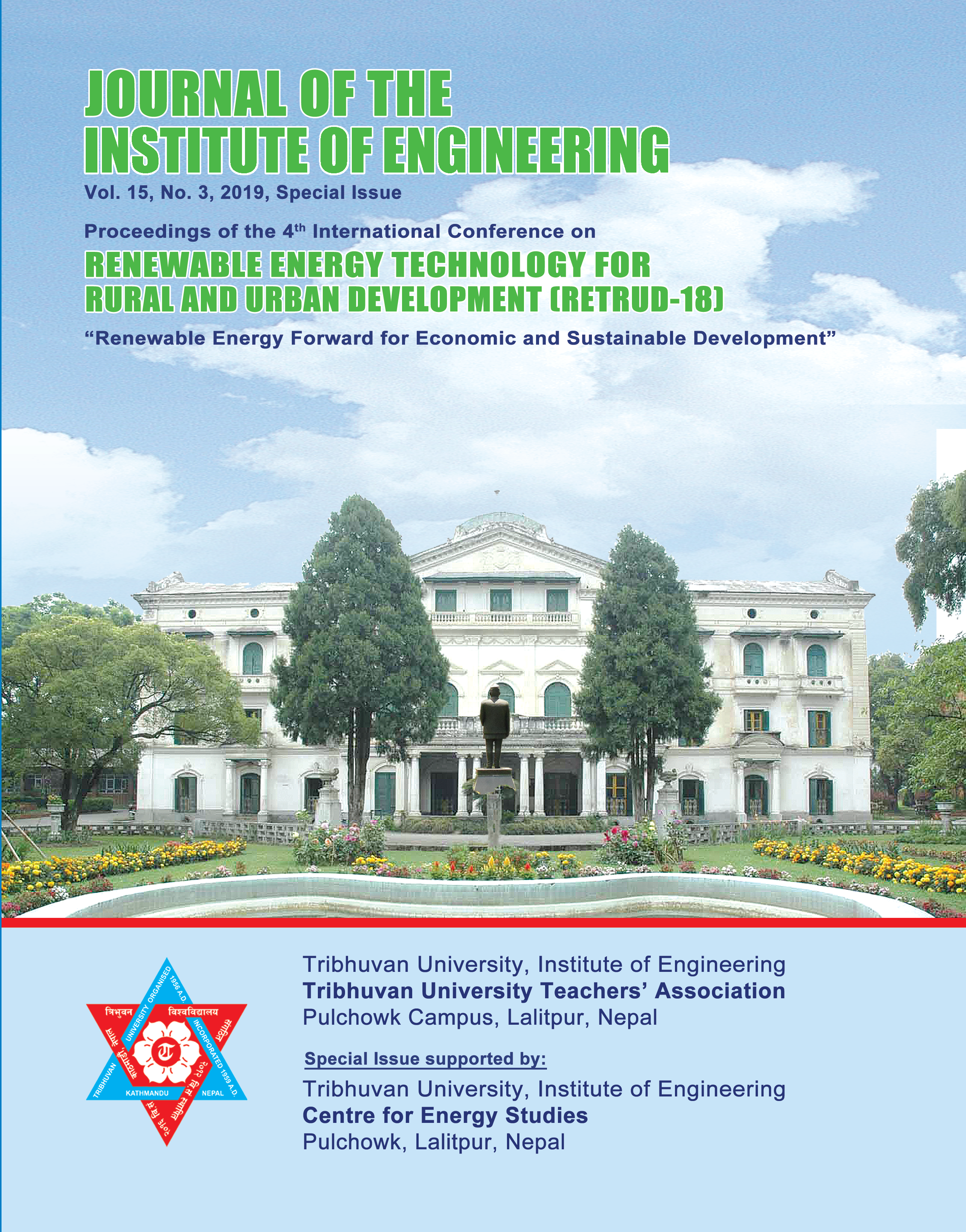Current Status of Small/Micro Hydropower in Nepal: A Case Study of Giringdi SHP
DOI:
https://doi.org/10.3126/jie.v15i3.31993Keywords:
Small hydropower, Electromechanical, Electricity, Vibration, Micro hydropowerAbstract
Nepal has economically exploitable hydropower potential of about 42,000 Megawatts out of which only about 2% has been harnessed so far. Nepal’s average annual per capita electricity consumption is about 161 kWh- one of the lowest consumptions in South Asia. Electrical energy available for the fiscal year 2016/2017 was 6257 GWh, of which NEA’s own contribution was only 36.84% whereas those imported from India and local IPPs accounted for 34.76% and 28.40% respectively. Despite its vast hydropower potential, Nepal suffers from severe and long-lasting electricity supply crisis. The main objective of the study was to assess the current status of small/micro hydropower in Nepal through a case study of Giringdi SHP (75 kW), considered as an example of excellence in small/micro hydropower. Analysis was done based on the primary data that was accumulated via questionnaires, simple observation, and direct on-site testing of components. It was found that the condition of plant with regard to installed major equipment like turbine, generator, Electronic Load Controller (ELC), control valves, panel board and other electrical parameters were only satisfactory while the working condition of other components like bearings, shaft and couplings were considerably poor. Even the condition of one of the best sites, seemed to be satisfactory reflecting the frequency of maintenance and policies in rural off-grid/not connected region. Thus, this all shows that the government policy for off grid/ not connection in comparison with pre-connection and post-connection strategy regarding national electrification plan needs to be revised and rethought for future development and growth of this sector.
Downloads
Downloads
Published
How to Cite
Issue
Section
License
The Copyright is held by Journal of the Institute of Engineering, IOE, TU




